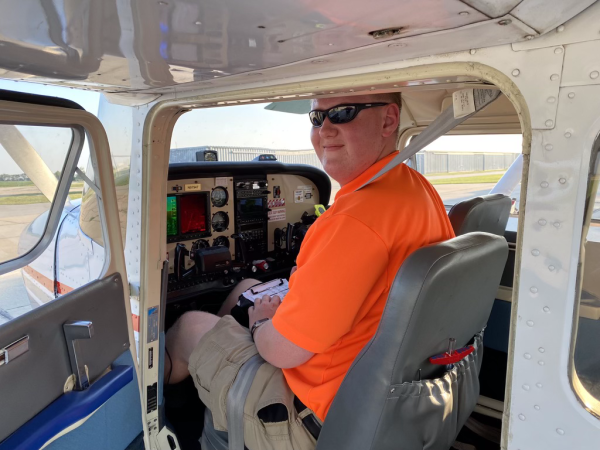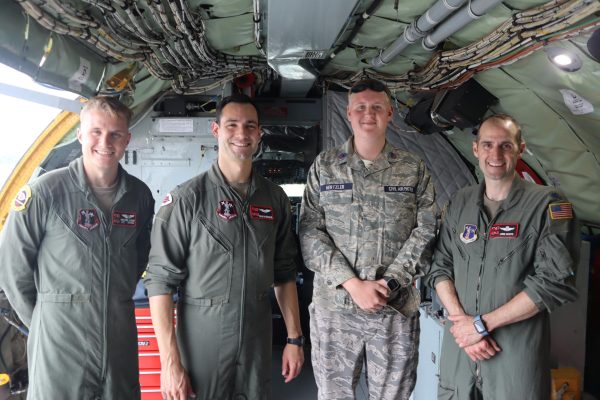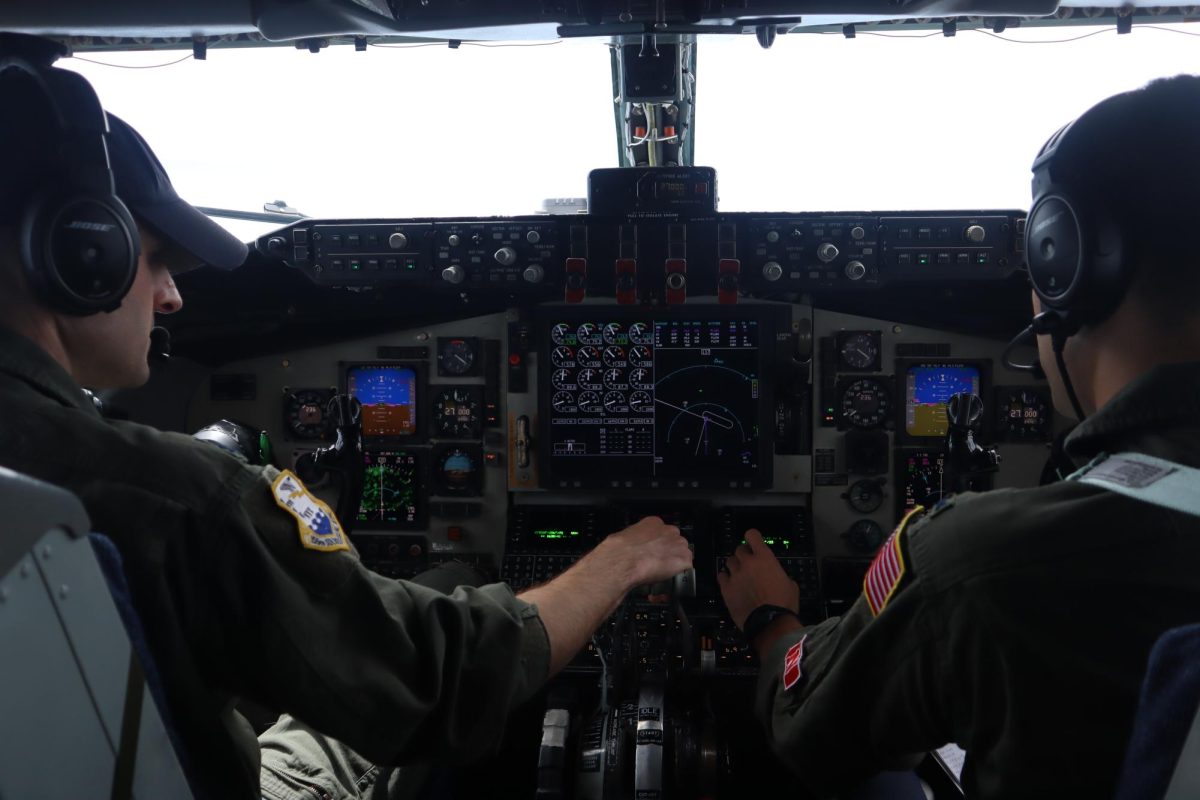As he prepares to take off, his aircraft’s engine is malfunctioning. He grabs the gas and puts it into the engine. But with no panic Hertzler leaves the engine running as he remembered the first two steps of the emergency plan. The engine goes back to normal and now Hertzler steps into the aircraft to start his solo flight.

Junior Alexander Hertzler obtained his student pilot license a couple of months ago and is now working to get his private pilot license. He hopes to one day become a senior pilot where he could earn up to 1.5 million dollars per year.
“I’ve been flying since I was three months old, ” Hertzler said. “Of course not as a pilot back then, but always being in the skies has kind of already set everything in mind before I even took the controls myself.”
Hertzler’s parents own a Fixed Base operator that allows them to rent out a hangar space to other pilots. Additionally, they sell fuel and plane parts.
“After school, I would always go there,” Hertzler said. “My family would take me, so I would just be playing and supporting the entire time. My father is a private pilot, so I already had some aviation in the history of my family and he had about five different aircrafts in his life so far.”
Hertzler has been with the Air Force Auxiliary program since 2019. Over the summer he applied to a flight academy in Nebraska where his squadron funded him the entire way through, resulting in an all-paid expense except for transportation.
“[One time,] we went up on a mission with the Air Force, [and got] to refuel one of their aircrafts,” Hertzler said. “Not many people get to do that. [After] we went to the back of the aircraft, we just laid down because we had some windows back there, and we just saw the other aircraft. You could see the faces of these people. That’s how close you were.”
During his flight academy, Hertlzer was able to train on a Cessna 172 aircraft, an American four seat single engine aircraft, and soon he will be flying on a Cessna 206, an aviation aircraft.
“It’s just so relaxing once you’re up in the air,” Hertzler said. “I stuck my hand out the window many times, going about 160 miles an hour. That wasn’t even as fast as the aircraft would go. It was more just kind of like you were dreaming, just in the air, relaxing.”
In the entire academy, there were seven different aircrafts and each aircraft had between three to four people on it.

A time to remember: After refueling the B-52, Hertzler takes a photo with the crew who were operating and refueling the aircraft.
“I was in the back seat and my instructor was showing the other student how to land an aircraft without an engine,” Hertzler said. “He cut the power and dove almost straight to the ground. We were maybe about 20 feet off the ground and we were still turning. It was quite an experience.”
In the Nebraska Flight Academy, a typical day is waking up at 6:30 a.m., going to the aircraft out of the hangars and preparing them to fly. They split off into groups and fly either in pairs or by themselves to a nearby airport and then land, swap out and fly back.

“You’re just floating,” Hertzler said. “It’s like [being] on a roller coaster. That’s probably why it made it so enjoyable at times because when we do our turns, we do tight [ones] instead of having a big wide turn.”
Hertzler plans to start an airline by himself, when he’s older and has the money, to help others visit their families who aren’t able to physically fly.



